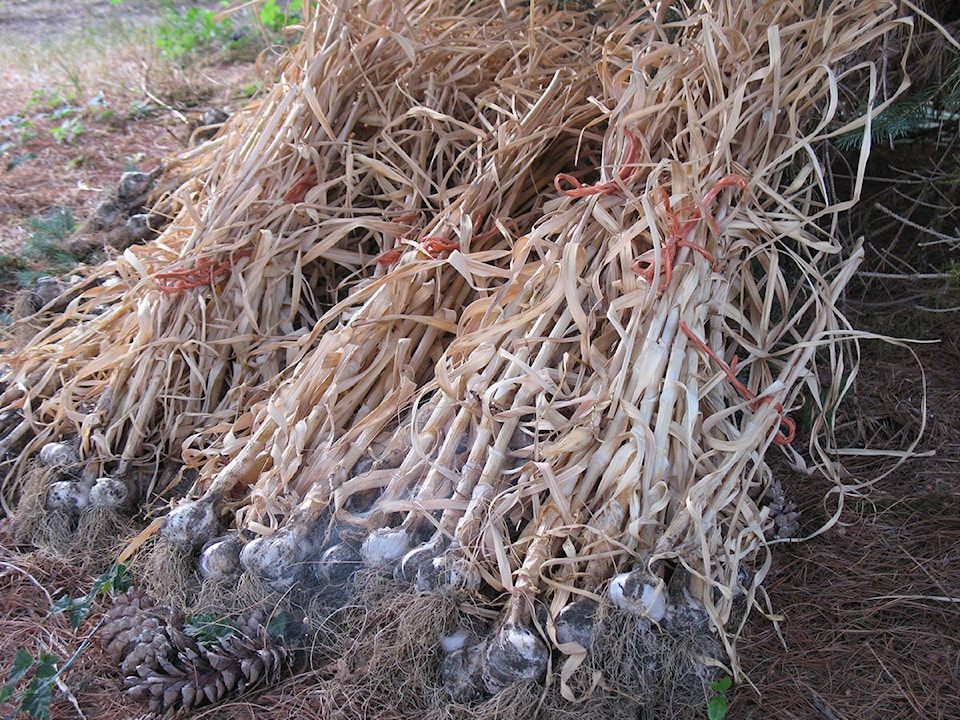By Mary Lowther
I finally dug out the last of the garlic and plan to sow overwintering vegetables in their stead. This excellent garlic grew in full sun and turned out great. The ones I allowed to grow out their stalks produced bulbs that are about a quarter inch smaller in diameter, but it remains to be seen if they store better than the others. The ones planted late October are also about a quarter inch wider than the later planted ones.
Although all the garlic I planted came from hardneck bulbs, two of them grew into softneck plants, so I intend to keep them separate and plant them in October to see what develops. Following Ron Engeland’s advice in his book Growing Great Garlic, I’m leaving them untrimmed until I need to use them and am not allowing them to dry in the sun as he says they deteriorate faster that way. I’ve tied them in bundles of 10 and temporarily housed them in the shade of a tree to dry a bit before I bring them into the basement for storage, but first I’ll have to vacuum the room. And then there’s the tomato trellis to finish, the potatoes to store, the corn to harvest and process and the fall and winter and overwintering vegetables to sow.
I want the overwintering vegetables to develop good root structure to take them through the winter, but I don’t want too much growth above ground because a cold winter might kill them. What I want is tough, small seedlings that won’t develop lush growth until winter’s over.
When to start overwintering vegetables is always a gamble, but I aim for mid-summer, giving them about three months to develop decent roots. Next spring the sun’s warmth will stimulate new growth and we should get an early harvest.
Good crops to try are overwintering onions, scallions, broccoli, raab, cabbage and cauliflower. Seeds for these crops should be sold as overwintering seeds because they have been developed to grow now and survive the winter to put on another growth spurt in the spring. I think I’ll try a few root crops too and see how they fare.
I’m sowing them into the beds emptied of the garlic crop. I’ll amend the soil with organic fertilizer at the rate of two litres per hundred square feet and a quarter inch of compost and dig this in. After a week-long rest, I’ll sow the seeds a bit thicker than the recommended spacing with plans to pull out those that crowd the others. I’ll lay out soaker hoses along the rows, then cover the beds with Reemay to keep out cabbage moth et al and give the seed bed a bit of shade, then I’ll hand spray with water twice a day until they sprout and hook the soaker hoses up to the timer and water them along with the rest of the garden.
It’s a bit late to start fall and winter vegetables, like cabbage and Brussels sprouts, but I’ve got nothing to lose except seeds and my time, so I’m going to sow them where I’ve taken out the potatoes, following the same routine as for the overwintering crops.
The first corn planting is ready for harvest, and I’m building up my energy reserves to deal with it all, but I suspect I used up most of my energy chasing after my kids when they were young.
Please contact mary_lowther@yahoo.ca with questions and suggestions since I need all the help I can get.
